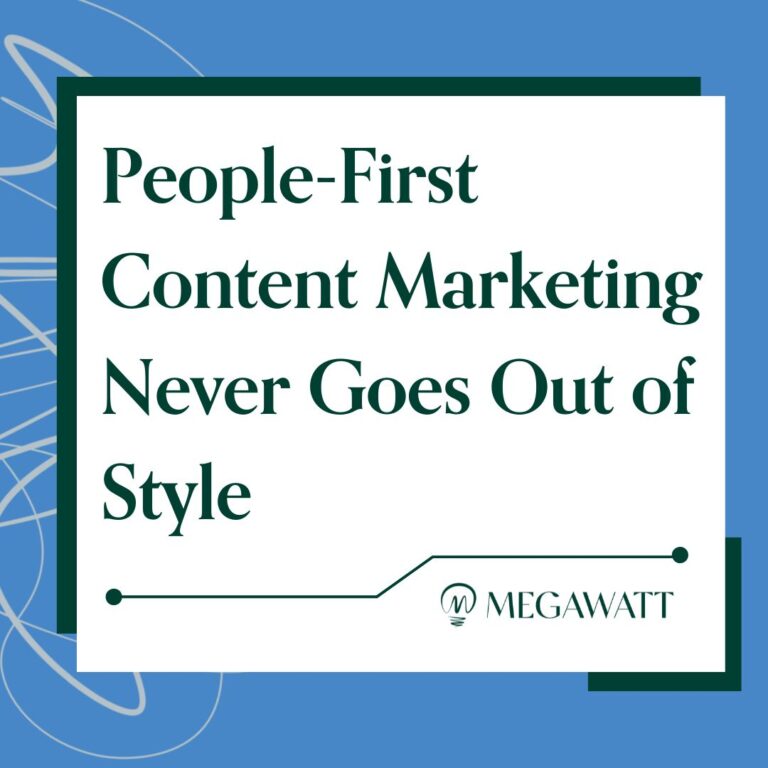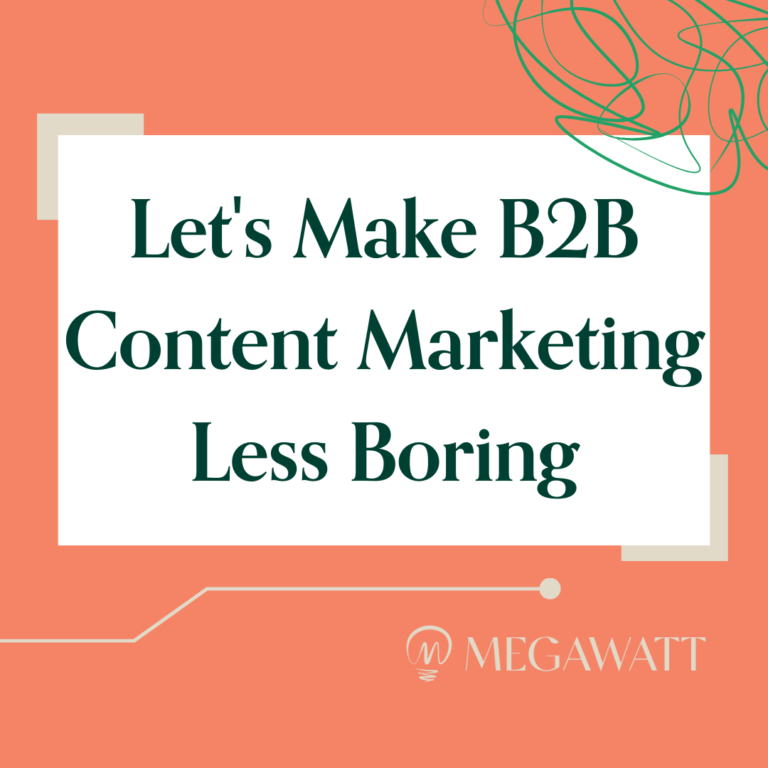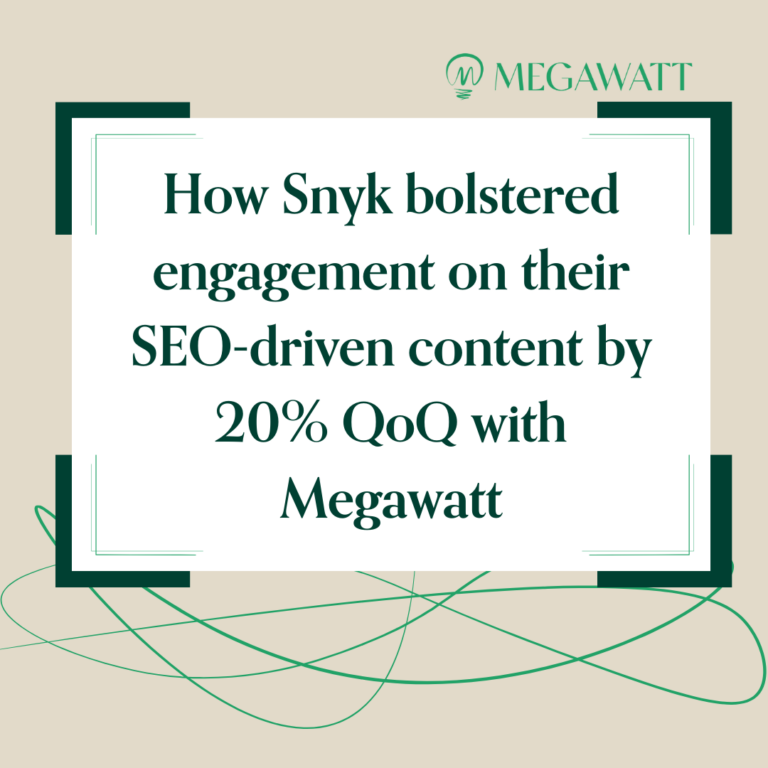People-first content for SEO is the way forward in 2024
EEAT…
SGE…
GenAI…
Those Google leaks everyone’s scrambling to make sense of…
Without a doubt, we’re in the midst of an SEO and content shake-up — dare we say revolution? — here in 2024.
With the internet filling up with exponentially more content as the days go by, people crave quality content more than ever. This is a big reason why solely keyword-driven content strategies are falling short.
How we got here
The introduction of generative AI has, as you know, ushered in new opportunities and challenges for marketers. GenAI has quickly overrun the internet with keyword-heavy content theoretically tailored to Google’s algorithmic whims. It’s now possible for anyone with a limited grasp of SEO to quickly produce mounds of content using generative AI tools.
But this doesn’t mean people are getting more of the content they want and need when they turn to search engines. Quite the opposite, in fact.
By now, we’ve all experienced the ugly side effects of the onslaught of search engine-first content.
Let’s say you’re planning a trip to Bali and want expert recommendations for hidden gems on your vacation. However, search results only yield tired, repetitive “top places to visit in Bali” articles, each featuring the same popular spots you probably could’ve found on your own through TripAdvisor or the like.
You’re probably tired of regurgitated content and SERPs filled with dozens of nearly identical results. It’s safe to assume that your potential customers feel the same way.
When we last wrote about people-first content marketing, we posited that writing for humans is more important than ever. This includes search-optimized content being written to drive traffic to your site. To catch attention within today’s oversaturated SERPs, businesses must create unique, valuable content designed for people first and foremost.
People-first? But don’t we need to rank on Google for pageviews?
It’s a common misconception that SEO content and people-first content are opposites. Thankfully, this isn’t true with Google’s existing algorithm.
Today, Google prefers content that prioritizes readers instead of trying to game their system. The search engine uses complex engagement signals to surface the most useful content to users and downgrade content that’s trying to just cram in keywords. We have two solid pieces of evidence that point to Google’s top priorities here:
The Helpful Content Update
In 2022, Google rolled out its Helpful Content Update. This update aims to help users find the best articles and information by penalizing content that’s primarily created to rank well. It turns out that people-first content is part of the very definition Google uses to describe “helpful content.” Here’s how they explain it:
People-first content means content that’s created primarily for people, and not to manipulate search engine rankings. How can you evaluate if you’re creating people-first content? Answering yes to the questions below means you’re probably on the right track with a people-first approach:
- Do you have an existing or intended audience for your business or site that would find the content useful if they came directly to you?
- Does your content clearly demonstrate first-hand expertise and a depth of knowledge (for example, expertise that comes from having actually used a product or service, or visiting a place)?
- Does your site have a primary purpose or focus?
- After reading your content, will someone leave feeling they’ve learned enough about a topic to help achieve their goal?
- Will someone reading your content leave feeling like they’ve had a satisfying experience?
Another clue to Google’s thinking?
Google’s internal API documentation
We got a rare look at Google’s inner workings when some SEO experts discovered a large-scale API warehouse leak in May 2024. This documentation revealed some key information on how Google determines page ranking on SERPs. Here are a few fascinating insights from this leak:
- Google uses in-depth context to determine if a backlink is valuable. It even penalizes domains with too many anchors.
- Google gauges “successful clicks” (e.g., signs that you receive qualified traffic) to see if a page should rank.
- Google scores shorter content based on originality.
- If SERP signals indicate that users are dissatisfied with a page, Google demotes it.
These new insights teach us one big lesson: a traditional, keyword-heavy, search engine-first strategy will no longer work.
3 tips for writing people-first SEO content
Creating people-first content doesn’t necessarily require a huge team or budget, but it demands strategy, domain expertise, and originality.
At Megawatt, we work with clients to create content that helps their readers, shaping a solid content strategy that serves the audience first, regardless of SEO goals.
Here are a few tips to consider as you begin to shape your people-first content strategy:
Get to know your audience deeply
Before creating a content strategy or typing a single word, spend time getting to know your audience. You can do this by:
- Talking with existing customers
- Interviewing your sales and customer success teams, who often have the most direct contact with prospects and customers
- Frequenting the communities where your target audience tends to hang out (e.g., LinkedIn, Reddit, etc.) Not sure where to start? Check out SparkToro‘s audience research tools.
- Building relationships with internal subject matter experts and practitioners at your organization whose jobs and interests align with that of your target audience(s)
- Reading trade publications
- Following industry leaders on social media
- Setting up Google Alerts and reading relevant news for your industry
Document personas and refresh regularly
Additionally, ensure that you have documented personas backed up by research and refresh this work regularly so that anyone writing for the brand can quickly grasp what your audience really cares about.
There are many ways to do persona research, and every organization will have slightly different persona documentation. If you’re just getting started, we recommend answering these questions about your potential audience:
- What job titles do they hold?
- Where are they in their careers, and where are they trying to go?
- What do their daily tasks and responsibilities look like?
- What kind of companies do they work for (size, maturity, etc.), and in what industries?
- What role do they play in the buying process?
- What are the professional problems they grapple with daily?
- What keeps them up at night?
- Who do they trust and where do they go for information about products, solutions, and problems they are trying to solve at work?
Every time you have an opportunity to speak with a prospect or customer, seize it to ask questions and understand how they think, what they need, and how you could be more helpful to them in your content.
Find a home on the range
In the past, SEO experts recommended using a “skyscraper” approach to creating content: publishing a “tall tower” of content covering a single topic from several angles. However, this strategy relies heavily on keywords for its success, meaning that it’s not nearly as effective in today’s quality-over-quantity world.
Many SEO experts now recommend a new approach: ranch-style SEO. (That’s ranch as in a home on the open range, not the salad dressing, btw.)
Instead of covering one keyword from several different angles, ranch-style SEO and content strategies are all about creating high-quality content that aligns with each stage of the buyer’s journey and the search intent that would accompany it.
Here’s a deeper dive into the difference between skyscraper and ranch-style SEO:
![]()
WIFM: Connect every piece of content to your audience’s needs
Once you know your audience inside and out, it’s time to consider how your products and/or services address their specific needs.
Align each of your target audience’s paint points and challenges to value propositions your solution(s) offer.
For example, if you’re a cybersecurity company selling a product that will be used by security professionals, one of the most important things to understand is the industry’s massive talent shortage and the resulting impact on security pros. They are overworked; their teams are understaffed; and they are expected to stay up-to-date on every aspect of a very complex field.
If your product helps security pros do their jobs more efficiently, automates rote tasks, and elevates their work to more strategic levels, emphasize this in your content.
In other words, when creating content, put yourself in the shoes of your target audience and ask, “What’s in it for me?” (WIFM).
Once you’ve pinpointed the WIFM for your audience for a specific piece of content, make sure it’s as clear as possible throughout the entire piece.
Remember to speak the language of your target audience as well. Security folks deal with alert fatigue daily, so instead of writing about how “busy” or “overwhelmed” they might be, perhaps write about reducing alert fatigue (if that applies to your solution).
When emphasizing about the importance of the WIFM in content, one of my colleagues often mentions a high school teacher who left a lasting impression on her. This teacher would scribble “SO WHAT” across the tops of their papers whenever she thought the thesis wasn’t clear enough. Whenever you go to write or edit a piece of content, keep asking, “SO WHAT?” and “What’s in it for my audience?” over and over until it’s clear as day.
How Megawatt can help kick off your people-first SEO strategy
While you can create people-first content for SEO with any budget or team size, it’s often helpful to bring in experts. You can get a lot of value from a team that has done this for many other organizations and can help you craft a people-first SEO strategy that works for your unique brand.
For some businesses, the best next step is to bring in a strategic partner who can help you craft and execute a people-first content and SEO plan.
Megawatt supports B2B tech companies with complex products and sophisticated audiences. We help clients create meaningful, people-first SEO content that drives results — from traffic all the way to converted customers.
Learn more about how we have helped companies like Snyk strategize and produce high-quality SEO content that drives business results.






